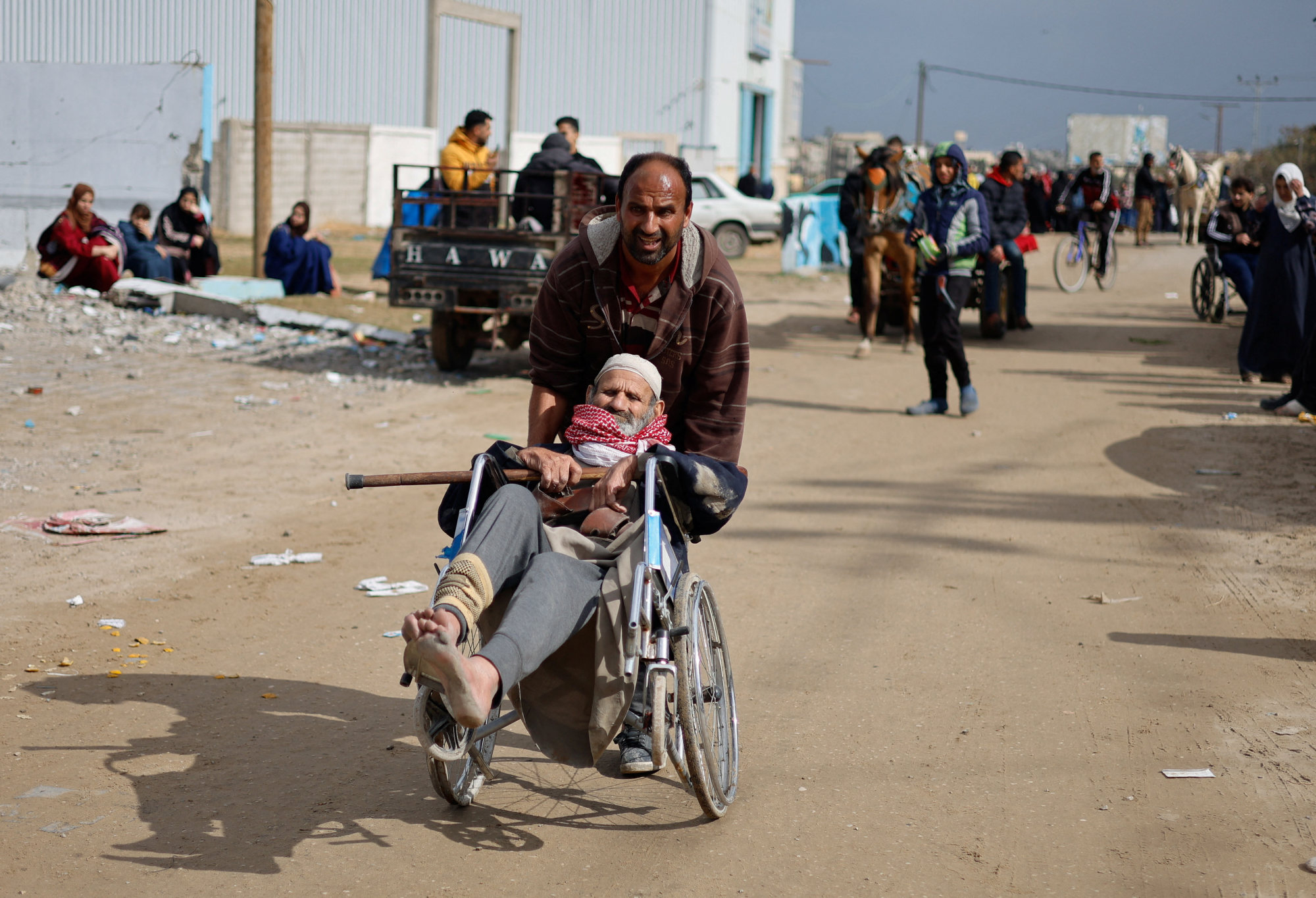Israeli military says special forces operating inside Gaza hospital
Video of the aftermath of the strike showed doctors scrambling to wheel patients on stretchers through a corridor filled with smoke or dust. A doctor used a cellphone light to illuminate a darkened room where a wounded man screamed out in pain as gunfire echoed outside. The Associated Press could not authenticate the videos, but they were consistent with its reporting.
Dr. Khaled Alserr, one of the remaining surgeons at Nasser Hospital, said that the seven patients hit early on Thursday were already being treated for past wounds. On Wednesday, a doctor was lightly wounded when a drone opened fire on the upper stories of the hospital, he said.
“The situation is escalating every hour and every minute,” he said.
The Israeli military said on Thursday, it had credible information that the bodies of hostages taken on October 7 may be in the facility.
“We conduct precise rescue operations – as we have in the past – where our intelligence indicates that the bodies of hostages may be held,” the military said in a statement.
The Israeli military said on Wednesday that it had opened a secure corridor for displaced people to leave the hospital but would allow doctors and patients to remain there. Videos circulating online showed scores of people walking out of the facility on foot carrying their belongings on their shoulders.
People have been forced into an impossible situation
The military had ordered the evacuation of Nasser Hospital and surrounding areas last month. But as with other health facilities, doctors said patients were unable to safely leave or be relocated, and thousands of people displaced by fighting elsewhere remained there. Palestinians say nowhere is safe in the besieged territory, as Israel continues to carry out strikes in all parts of it.
“People have been forced into an impossible situation,” said Lisa Macheiner of the aid group Medecins Sans Frontieres, which has staff in the hospital.
“Stay at Nasser Hospital against the Israeli military’s orders and become a potential target, or exit the compound into an apocalyptic landscape where bombings and evacuation orders are a part of daily life.”

No end in sight to months-long war
The war began when Hamas militants burst through Israel’s formidable defences on October 7 and rampaged through several communities, killing some 1,200 people and taking another 250 hostage. More than 100 of the captives were freed during a ceasefire last year in exchange for 240 Palestinian prisoners.
Around 130 captives remain in Gaza, a fourth of whom are believed to be dead. Netanyahu has come under intense pressure from families of the hostages and the wider public to make a deal to secure their freedom, but his far-right coalition partners could bring down his government if he is seen as being too soft on Hamas.
Israel responded to the October 7 attack by launching one of the deadliest and most destructive military campaigns in recent history. More than 28,000 Palestinians have been killed, 80 per cent of the population have fled their homes and a quarter are starving amid a worsening humanitarian catastrophe. Large areas in northern Gaza, the first target of the offensive, have been completely destroyed.
India’s trade unions question need for more workers in Israel amid war
Hamas has continued to attack Israeli forces in all parts of Gaza, and says it will not release all the remaining captives until Israel ends its offensive and withdraws. Hamas is also demanding the release of many Palestinian prisoners, including top militants.
Netanyahu has rejected those demands, calling them “delusional,” and says Israel will soon expand its offensive into Gaza’s southernmost city of Rafah, on the Egyptian border. Over half of Gaza’s population of 2.3 million has sought refuge in Rafah after fleeing fighting elsewhere in the coastal enclave.
In northern Israel, meanwhile, a rocket attack killed a female soldier and wounded eight people when one of the projectiles hit a military base in the town of Safed on Wednesday. Israel carried out air strikes in southern Lebanon in response that killed three Hezbollah fighters and 10 civilians, including six women and three children.
Israel and Hezbollah have traded fire along the border nearly every day since the start of the war in Gaza. Hezbollah has not claimed responsibility for Wednesday’s rocket attack.
Additional reporting by Reuters